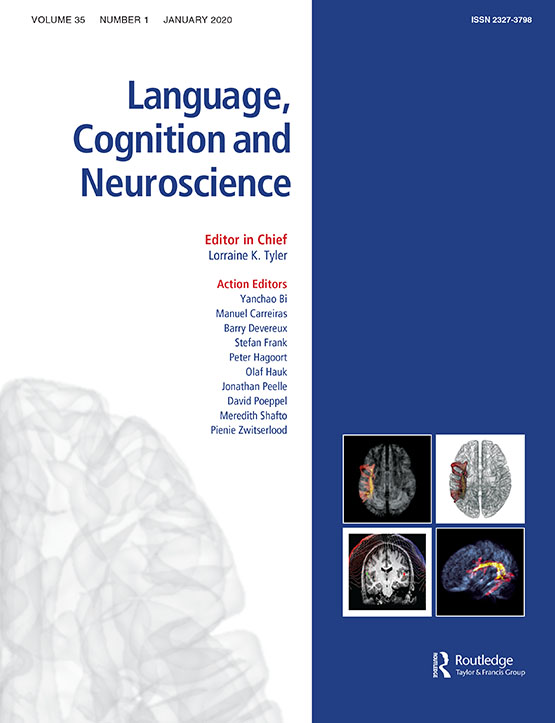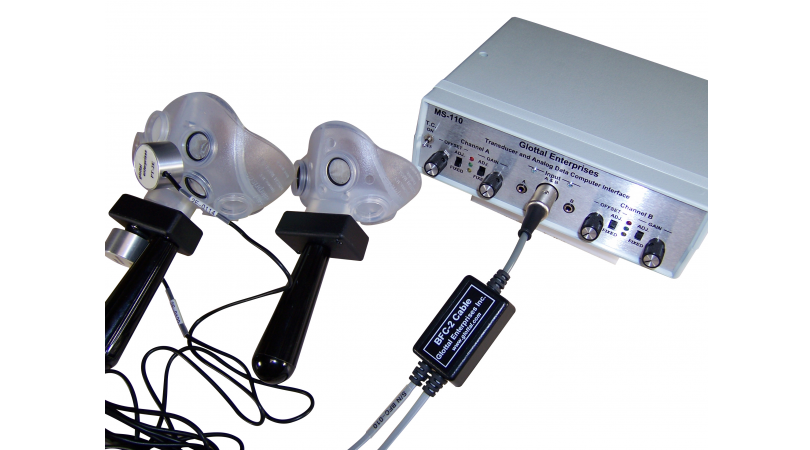【限时资源,期刊全文】Language, Cognition and Neuroscience(《语言、认知和神经科学》)2019年全文(侵删)
1587 阅读 21 下载 2020-06-24 18:13:59 上传 90.03 MB
本期推送的是国际权威期刊(2018年影响因子2.444)——Language, Cognition and Neuroscience(《语言、认知和神经科学》)2019年第34卷全10期的84篇论文,目录可在正文中查看,全文可于文末点击下载,
Language, Cognition and Neuroscience(《语言、认知和神经科学》)2019年全文(侵删)
该期刊2018年影响因子2.444
资料整理:张明辉(微信:zhangxiaojian160408)
(资源下载三天有效,三天后如需要,请加小编微信联系)

该刊2019年第34卷第1-10期论文目录
| 卷号 | 期号 | 论文号 | 论文题目 |
| Vol. 34 | Issue 1 | Article 01 | Meaning-based attentional guidance as a function of foveal and task-related cognitive loads |
| Vol. 34 | Issue 1 | Article 02 | ERP Indicators of local and global text influences on word-to-text integration |
| Vol. 34 | Issue 1 | Article 03 | Does the prosodic emphasis of sentential context cause deeper lexical-semantic processing? |
| Vol. 34 | Issue 1 | Article 04 | Structure in talker variability: How much is there and how much can it help? |
| Vol. 34 | Issue 1 | Article 05 | Semantic interference in speech error production in a randomised continuous naming task: evidence from aphasia |
| Vol. 34 | Issue 1 | Article 06 | Formal and semantic effects of morphological families on word recognition in Hebrew |
| Vol. 34 | Issue 1 | Article 07 | People with larger social networks are better at predicting what someone will say but not how they will say it |
| Vol. 34 | Issue 1 | Article 08 | What does “it” mean, anyway? Examining the time course of semantic activation in reference resolution |
| Vol. 34 | Issue 2 | Article 09 | Automatic access to verb continuations on the lexical and categorical levels: evidence from MEG |
| Vol. 34 | Issue 2 | Article 10 | Neural substrates of subphonemic variation and lexical competition in spoken word recognition |
| Vol. 34 | Issue 2 | Article 11 | Processing relative clauses across comprehension and production: similarities and differences |
| Vol. 34 | Issue 2 | Article 12 | The online processing of noun phrase ellipsis and mechanisms of antecedent retrieval |
| Vol. 34 | Issue 2 | Article 13 | The impact of variety of episodic contexts on the integration of novel words into semantic network |
| Vol. 34 | Issue 2 | Article 14 | Lexical prediction in language comprehension: a replication study of grammatical gender effects in Dutch |
| Vol. 34 | Issue 2 | Article 15 | Age-related differences in multimodal recipient design: younger, but not older adults, adapt speech and co-speech gestures to common ground |
| Vol. 34 | Issue 3 | Article 16 | Occluding the face diminishes the conceptual accessibility of an animate agent |
| Vol. 34 | Issue 3 | Article 17 | Overt language production of German past participles: investigating (ir-)regularity |
| Vol. 34 | Issue 3 | Article 18 | Negation and the N400: investigating temporal aspects of negation integration using semantic and world-knowledge violations |
| Vol. 34 | Issue 3 | Article 19 | Conflict monitoring in bilingual language comprehension? Evidence from a bilingual flanker task |
| Vol. 34 | Issue 3 | Article 20 | When verbs have bugs: lexical and syntactic processing costs of split particle verbs in sentence comprehension |
| Vol. 34 | Issue 3 | Article 21 | Taking action in hand: effects of gesture observation on action verb naming |
| Vol. 34 | Issue 3 | Article 22 | The use of syntax and information structure during language comprehension: Evidence from structural priming |
| Vol. 34 | Issue 3 | Article 23 | Look and listen! The online processing of Korean case by native and non-native speakers |
| Vol. 34 | Issue 4 | Article 24 | From story comprehension to the neurobiology of language |
| Vol. 34 | Issue 4 | Article 25 | The exceptional nature of the first person in natural story processing and the transfer of egocentricity |
| Vol. 34 | Issue 4 | Article 26 | Predictive sentence comprehension during story-listening in autism spectrum disorder |
| Vol. 34 | Issue 4 | Article 27 | Understanding fairy tales spoken in dialect: an fMRI study |
| Vol. 34 | Issue 4 | Article 28 | M/EEG analysis of naturalistic stories: a review from speech to language processing |
| Vol. 34 | Issue 4 | Article 29 | How to analyse electrophysiological responses to naturalistic language with time-resolved multiple regression |
| Vol. 34 | Issue 4 | Article 30 | Localising memory retrieval and syntactic composition: an fMRI study of naturalistic language comprehension |
| Vol. 34 | Issue 4 | Article 31 | Mental simulation during literary reading: Individual differences revealed with eye-tracking |
| Vol. 34 | Issue 4 | Article 32 | Putting language back into ecological communication contexts |
| Vol. 34 | Issue 5 | Article 33 | Context and perceptual asymmetry effects on the mismatch negativity (MMNm) to speech sounds: an MEG study |
| Vol. 34 | Issue 5 | Article 34 | Backward-looking sentence processing in typically disfluent versus stuttered speech: ERP evidence |
| Vol. 34 | Issue 5 | Article 35 | Dynamic effect of tonal similarity in bilingual auditory lexical processing |
| Vol. 34 | Issue 5 | Article 36 | When morphological structure overrides meaning: evidence from German prefix and particle verbs |
| Vol. 34 | Issue 5 | Article 37 | Predicting turn-ends in discourse context |
| Vol. 34 | Issue 5 | Article 38 | Noise increases listening effort in normal-hearing young adults, regardless of working memory capacity |
| Vol. 34 | Issue 5 | Article 39 | Antecedent access mechanisms in pronoun processing: evidence from the N400 |
| Vol. 34 | Issue 5 | Article 40 | Investigating the fit between phonological feature systems and brain responses to speech using EEG |
| Vol. 34 | Issue 6 | Article 41 | Electrophysiological evidence for the time course of syllabic and sub-syllabic encoding in Cantonese spoken word production |
| Vol. 34 | Issue 6 | Article 42 | Psycholinguistic variables in visual word recognition and pronunciation of European Portuguese words: a mega-study approach |
| Vol. 34 | Issue 6 | Article 43 | Aligning sentence structures in dialogue: evidence from aphasia |
| Vol. 34 | Issue 6 | Article 44 | Reading Pinyin activates sublexcial character orthography for skilled Chinese readers |
| Vol. 34 | Issue 6 | Article 45 | Listener-oriented phonetic reduction and theory of mind |
| Vol. 34 | Issue 6 | Article 46 | Individual differences in the link between perception and production and the mechanisms of phonetic imitation |
| Vol. 34 | Issue 6 | Article 47 | Proficiency affects intra- and inter-regional patterns of language control in second language processing |
| Vol. 34 | Issue 6 | Article 48 | A lexical bottleneck in shadowing and translating of narratives |
| Vol. 34 | Issue 7 | Article 49 | The neural basis of arithmetic and phonology in deaf signing individuals |
| Vol. 34 | Issue 7 | Article 50 | The Source-Goal asymmetry in spatial language: language-general vs. language-specific aspects |
| Vol. 34 | Issue 7 | Article 51 | Mapping prosody onto meaning – the case of information structure in American English* |
| Vol. 34 | Issue 7 | Article 52 | Deciding to look: revisiting the linking hypothesis for spoken word recognition in the visual world |
| Vol. 34 | Issue 7 | Article 53 | Prediction and integration of semantics during L2 and L1 listening |
| Vol. 34 | Issue 7 | Article 54 | The neurocognitive mechanisms of semantic gender processing in L1 and L2 personal nouns by Chinese-English bilinguals |
| Vol. 34 | Issue 7 | Article 55 | Interactive L2 vocabulary acquisition in a lab-based immersion setting |
| Vol. 34 | Issue 7 | Article 56 | When is the verb a potential gap site? The influence of filler maintenance on the active search for a gap |
| Vol. 34 | Issue 8 | Article 57 | Resting-state and vocabulary tasks distinctively inform on age-related differences in the functional brain connectome |
| Vol. 34 | Issue 8 | Article 58 | Processing derived verbs: the role of motor-relatedness and type of morphological priming |
| Vol. 34 | Issue 8 | Article 59 | Passives are not hard to interpret but hard to remember: evidence from online and offline studies |
| Vol. 34 | Issue 8 | Article 60 | ERP Effects of masked orthographic neighbour priming in deaf readers |
| Vol. 34 | Issue 8 | Article 61 | The production of grammatical and lexical determiners in Broca’s aphasia |
| Vol. 34 | Issue 8 | Article 62 | Any leftovers from a discarded prediction? Evidence from eye-movements during sentence comprehension |
| Vol. 34 | Issue 8 | Article 63 | Processing corrective focus and information focus at different positions: an electrophysiological investigation |
| Vol. 34 | Issue 9 | Article 64 | Thirty years of Speaking: An introduction to the Special Issue |
| Vol. 34 | Issue 9 | Article 65 | From blueprints to brain maps: the status of the Lemma Model in cognitive neuroscience |
| Vol. 34 | Issue 9 | Article 66 | The role of conceptualization during language production: evidence from event encoding |
| Vol. 34 | Issue 9 | Article 67 | Linearisation during language production: evidence from scene meaning and saliency maps |
| Vol. 34 | Issue 9 | Article 68 | Mutual attraction between high-frequency verbs and clause types with finite verbs in early positions: corpus evidence from spoken English, Dutch, and German |
| Vol. 34 | Issue 9 | Article 69 | Why do people produce pronouns? Pragmatic selection vs. rational models |
| Vol. 34 | Issue 9 | Article 70 | Semantic processing during language production: an update of the swinging lexical network |
| Vol. 34 | Issue 9 | Article 71 | Phonetic encoding in utterance production: a review of open issues from 1989 to 2018 |
| Vol. 34 | Issue 9 | Article 72 | Toward an (even) more comprehensive model of speech production planning |
| Vol. 34 | Issue 9 | Article 73 | Articulating: the neural mechanisms of speech production |
| Vol. 34 | Issue 9 | Article 74 | Is repairing speech errors an automatic or a controlled process? Insights from the relationship between error and repair probabilities in English and Spanish |
| Vol. 34 | Issue 9 | Article 75 | Tuning the blueprint: how studies of implicit learning during speaking reveal the information processing components of the production system |
| Vol. 34 | Issue 10 | Article 76 | Abstraction and concepts: when, how, where, what and why? |
| Vol. 34 | Issue 10 | Article 77 | Development weaves brains, bodies and environments into cognition |
| Vol. 34 | Issue 10 | Article 78 | The role of embodiment in conceptual development |
| Vol. 34 | Issue 10 | Article 79 | Categories, concepts, and conceptual development |
| Vol. 34 | Issue 10 | Article 80 | Metaphoric extension, relational categories, and abstraction |
| Vol. 34 | Issue 10 | Article 81 | What have labels ever done for us? The linguistic shortcut in conceptual processing |
| Vol. 34 | Issue 10 | Article 82 | From words-as-mappings to words-as-cues: the role of language in semantic knowledge |
| Vol. 34 | Issue 10 | Article 83 | When does abstraction occur in semantic memory: insights from distributional models |
| Vol. 34 | Issue 10 | Article 84 | Features, labels, space, and time: factors supporting taxonomic relationships in the anterior temporal lobe and thematic relationships in the angular gyrus |
所需积分:0 分
限期开放已结束
相关工具
表情
图片
附件













